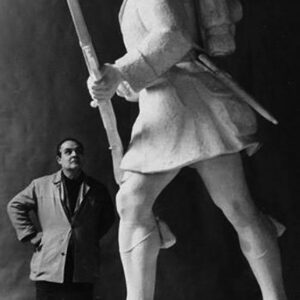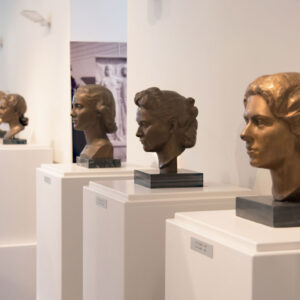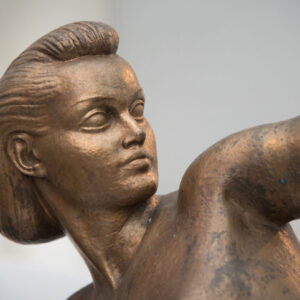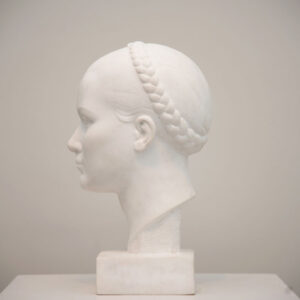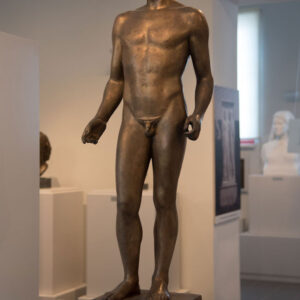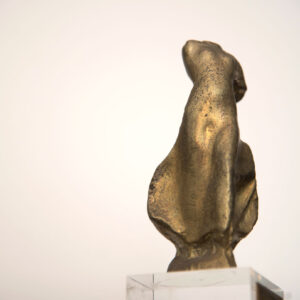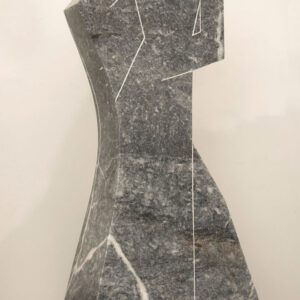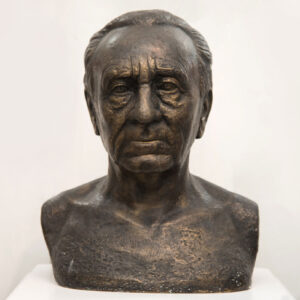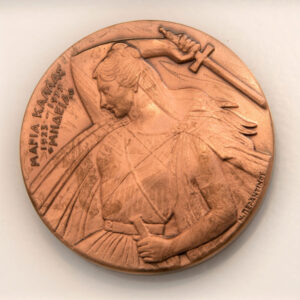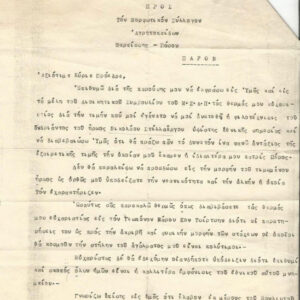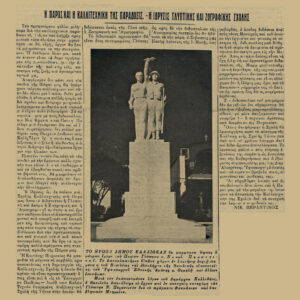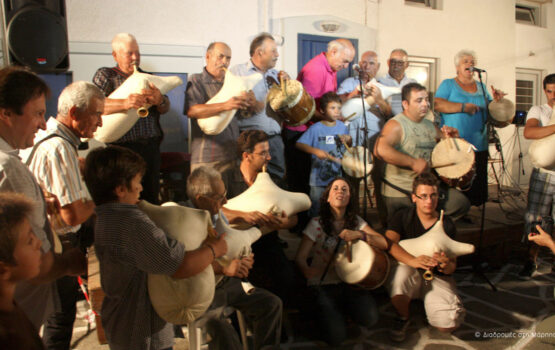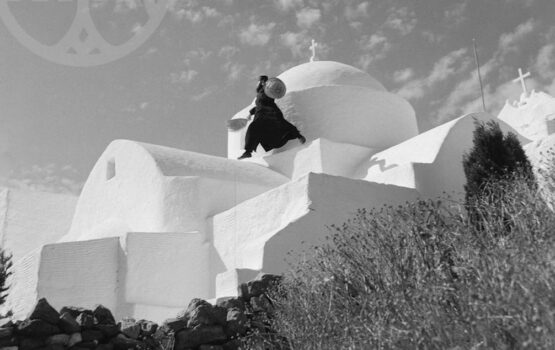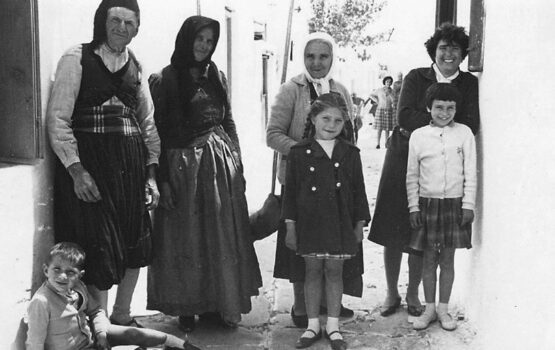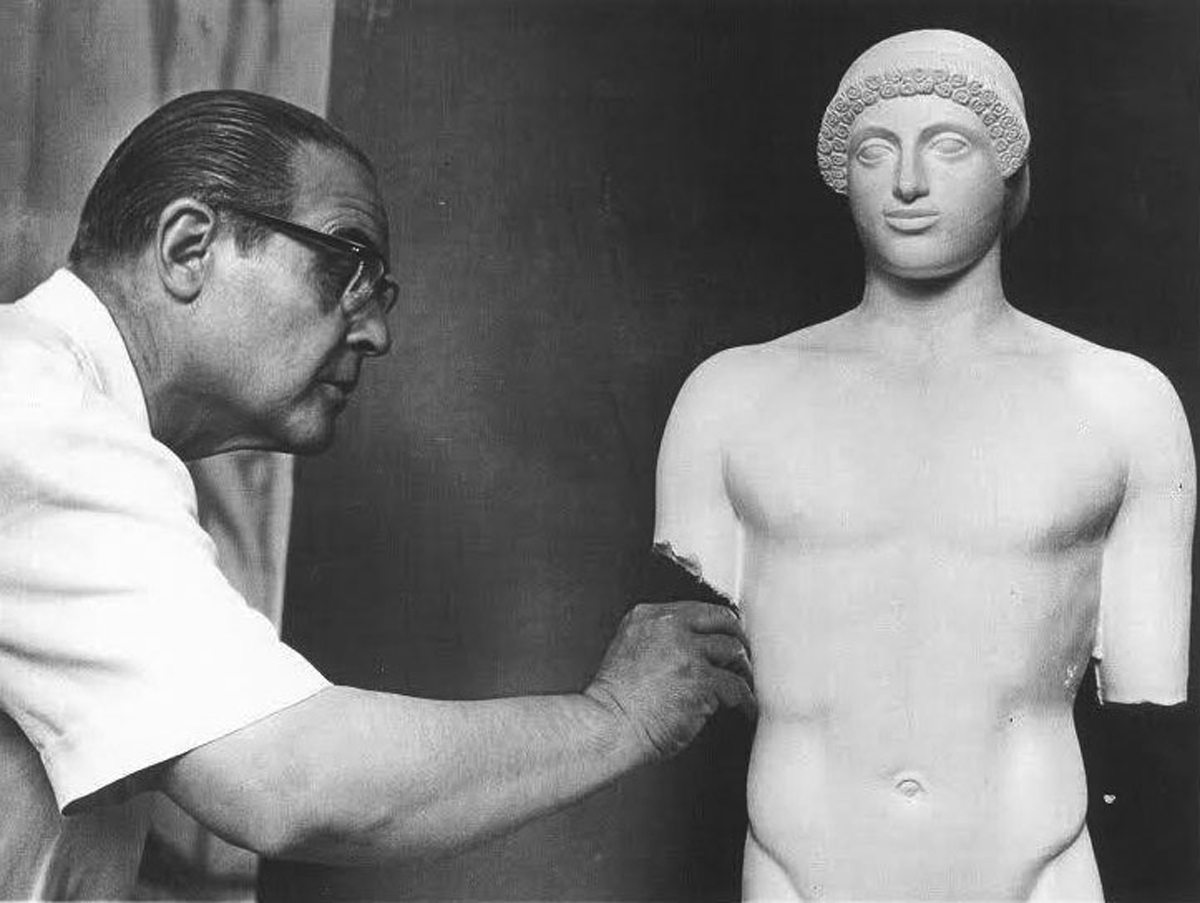
Creative effort is an endless process, as is knowledge. It only has a beginning; it has no end, nor stations. It is at the same time a pain, rekindled each time one is reminded of that melancholic“ars longa, vita brevis
Nikolaos Perantinos
Nikolaos Perantinos is a sculptor of Parian origin, born in 1910. He showed an artistic tendency from a young age, which was cultivated during his studies at the School of Fine Arts from which he graduated with the “Chryssovergio” Award for his work “Gimno Andros”(Male Nude) in 1933 (Perantinos, 1975, p. 18&81). He was a student of Tombros and Panousis, while in 1941 he was appointed sculptor – conservator at the National Archaeological Museum in Athens. He worked on the restoration of several of antiquity’s masterpieces, such as the “Horse of Artemisio”, the “Kouros of Sounio”, etc.; prominent archaeologists, such as Richter, praised his work and his knowledge of ancient Greek sculpture (Perantinos, 1990, p. 40). Perantinos continued his studies in France, where he was an apprentice of Gimont, Janniot, and Dropsy, with Charbonneaux ranking Perantinos at the same level as the ancient Greek sculptors (Perantinos, 1990, p. 12-13). Perantinos then travelled to several European cities to study and be inspired, while when he returned to Greece in 1951 (Perantinos, 1975, p. 8) he proved to be very productive, creating a variety of works from busts and statues, to reliefs, coins, and medals.
He took part in art competitions and exhibitions in Greece and abroad with his works standing out; moreover, he was actively involved in Greece’s social and cultural affairs, holding important public posts, as he thought of himself as an “ambassador of the marble sculpture of Paros” (Perantinos , 2001, p. 6-7). Perantinos was enchanted by the climatic conditions of his island and loved the use of Parian marble, namely the lichnite that bestows on his works an illuminating effect under sunlight. This longing inspired him to establish his art workshop in Agia Anna in Parikia, Paros, to pass on his knowledge to the island’s youth, free of charge (Aliprantis, 1972, p. 78). According to Panagiotopoulos, his works are characterised by “an expressiveness, and give an impression of movement and fluidity in space” (Perantinos, 1975, p. 5-6); Lydakis emphasises that Perantinos “remained steadfast in his classical ideals, because he felt a sense of responsibility, which was evident in his homogeneous and multifaceted work” (Perantinos, 2001, p. 14-15).
In 1991, Perantinos was delighted to receive the Fine Arts Excellence Award in the field of Sculpture by the Academy of Athens, as he considered this to be an acknowledgement of his contribution to art by his homeland. A few months later, he passed away leaving behind an important legacy; his works are scattered throughout Greece and abroad, to inspire and teach the generations to come (Perantinos, 2001, p. 15). Nevertheless, Perantinos selected 192 of his most representative works and donated them to Marpissa, in order to create a museum in his name, which was inaugurated in 2009 (Kathimerini, 2009).
Today, the Sculpture Museum of Nikolaos Perantinos hosts more than 200 of the sculptor’s works. The realistic depiction, the classic principles of balance, harmony, and moderation, the idealisation, the detail, the fine lines, and a sense of spirituality are some of the elements that pervade his works; the museum visitor observes these elements, realising that the sculptor’s classic lines will remain timeless, as they incorporate all the characteristics of nature and culture that have shaped us as a people. These works of art will carry on the sculptor’s ‘light’ in the centuries to follow, as, through them, the artist has transcended to immortality and eternal memory.
Ragousi, A. Katerina
Sources
Aliprantis, C. N. (1972) Physiognomy of Ancient Paros, In Athens: Parian Library.
Kathimerini (2009) Opening at the New Museum of Nikos Perantinos in Marpissa, Paros, <www.kathimerini.gr>, last visit: 20/02/21.
Monographs
N. Perantinos. Sculpture, Athens Publishing Centre, Athens, 1975.
Nikos Perantinos. Sculpture 1933-1990, Athens, 1990.
Nikos Perantinos 1910-1991 Sculpture, Paros, 2001.



